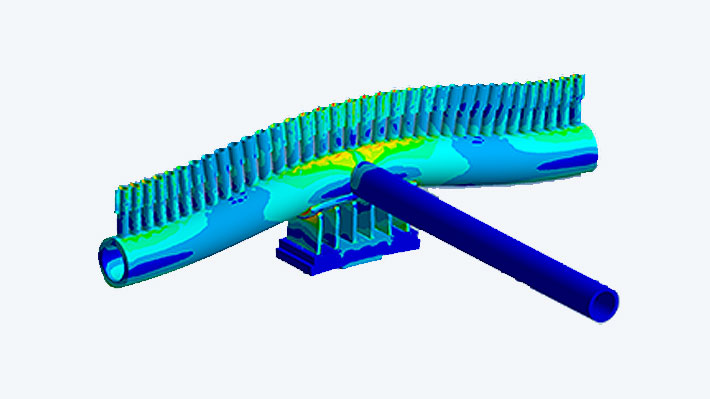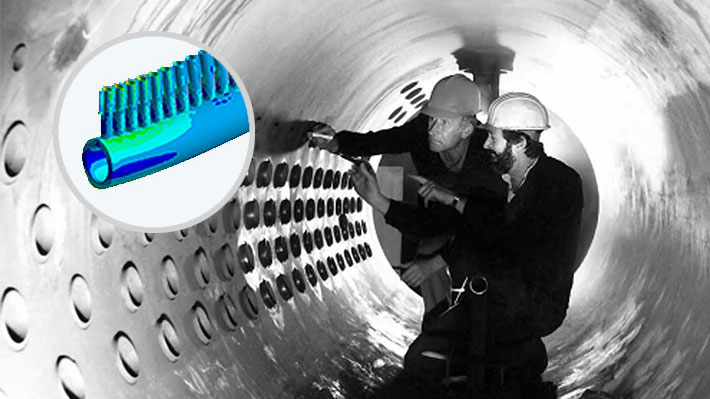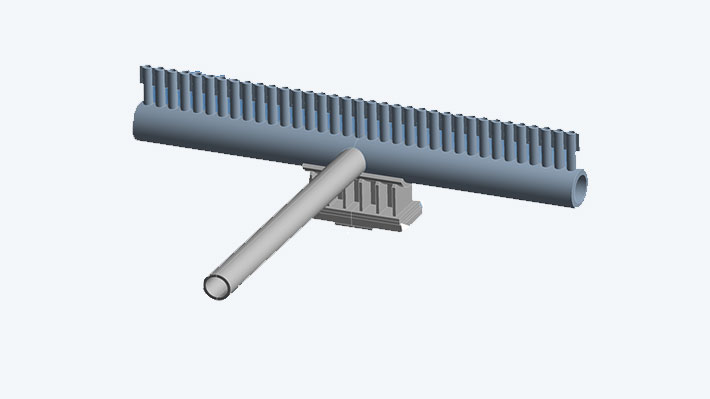Simulative design according to AD 2000 in plant construction
Sector: Energy supplySpecialist field: Structural mechanicsAUSTRIAN ENERGY builds large plants for energy production. Simulation helps with the optimal design according to AD 2000 and with material savings for steam generators.
Summary
Task
For a steam generator, the minimum required wall thickness of a nozzle connection to the header pipe was sought, which as a design criterion provides successful static proof in accordance with the evaluation and design regulations according to the AD pamphlets (AD 2000).
Solution
The determination of the minimum required wall thickness was done with the Finite Element Method (FEM) within the ANSYS Workbench environment.
Customer benefits
The parameterized model structure with variable wall thicknesses made it possible to find a design with the greatest possible material savings (low wall thickness) with little effort, while considering the evaluation regulations.
Project Details
Task
Optimal utilization of material plays a major role, especially in plant construction, where excessive wall thicknesses of pipes, etc. can quickly have a financial impact. In the task presented here, the minimum required wall thickness of a nozzle connection to the header pipe of a steam generator (boiler) was sought. The design criterion required for this purpose is a successful static verification in accordance with the evaluation and design specifications according to the AD pamphlets (AD 2000).

Customer Benefit
With the help of the FEM investigation, a good overview of the stress situation at the investigated nozzle connection could be obtained. Due to the parameterized model structure with variable wall thicknesses, a design with the greatest possible material savings (low wall thickness) could be found with little effort, and in compliance with the evaluation regulations.

Solution
The determination of the minimum required wall thickness was done with the Finite Element Method (FEM) within the ANSYS Workbench environment. A section of the header pipe and the fin wall attached to it with the corresponding nozzle connection to be examined was selected as the structure to be investigated. The section edges were provided with realistic boundary conditions (periodic boundary conditions).
The load scenarios, internal pressure, and external loads lead to deformations and thus to stresses at the interface between nozzle and collector pipe. These stresses can easily be evaluated in terms of the AD pamphlets in comparison to the limit values of the primary stresses. An iterative adjustment of the wall thicknesses in the simulation model makes it easy to determine the minimum permissible configuration.

Images: © AUSTRIAN ENERGY




